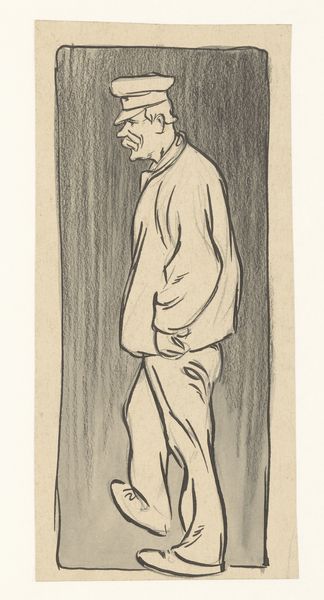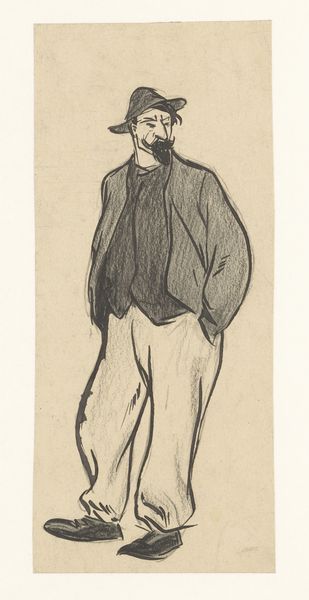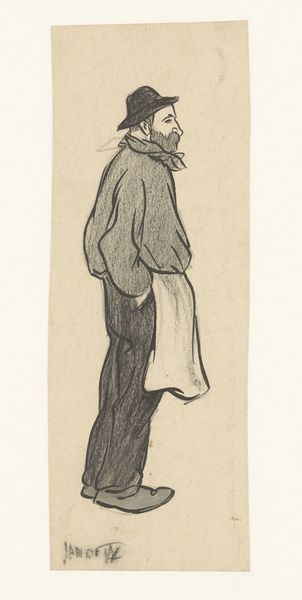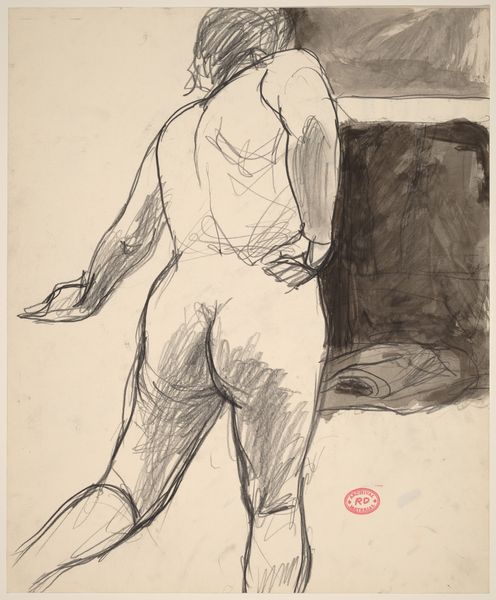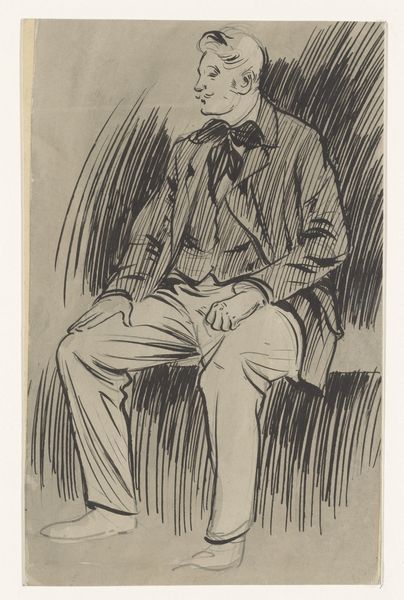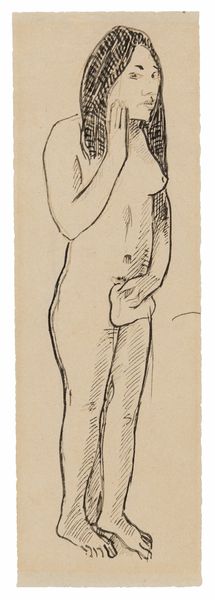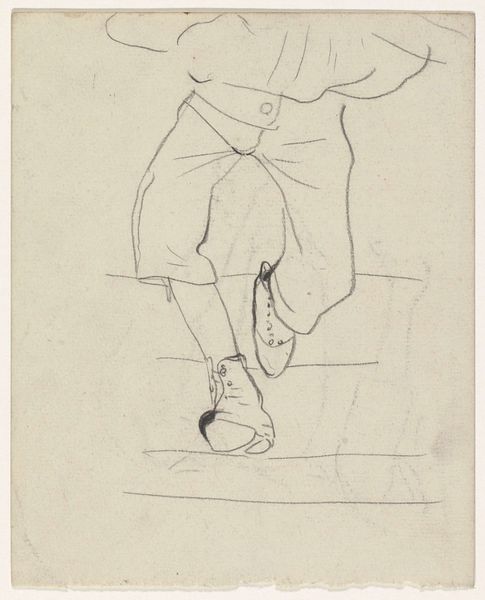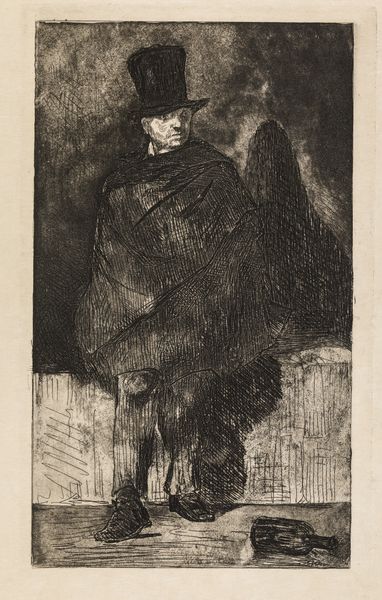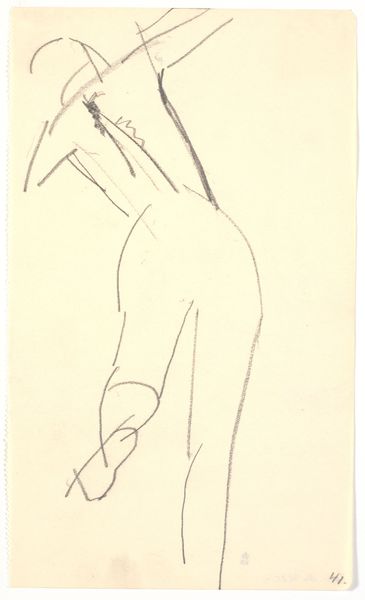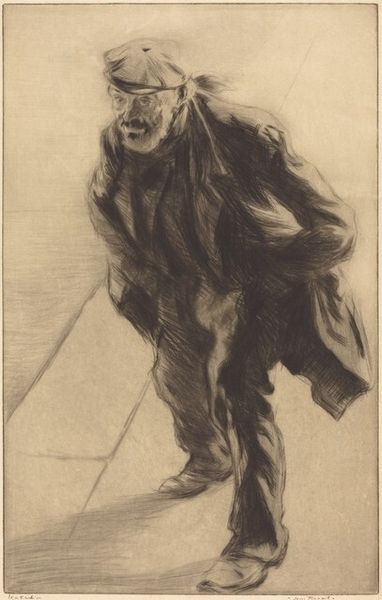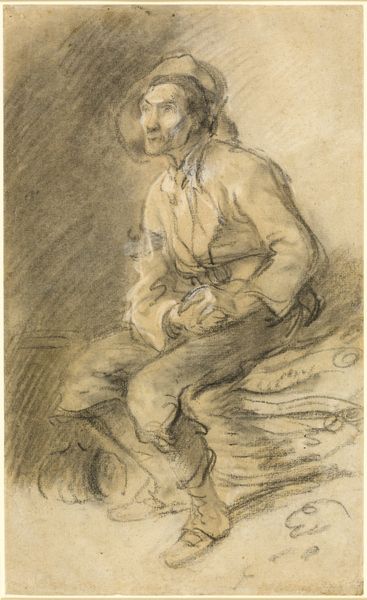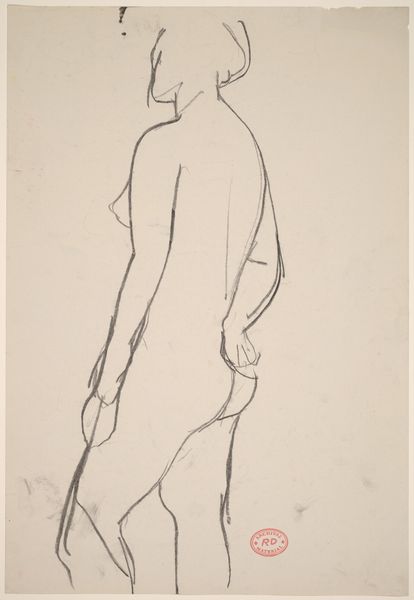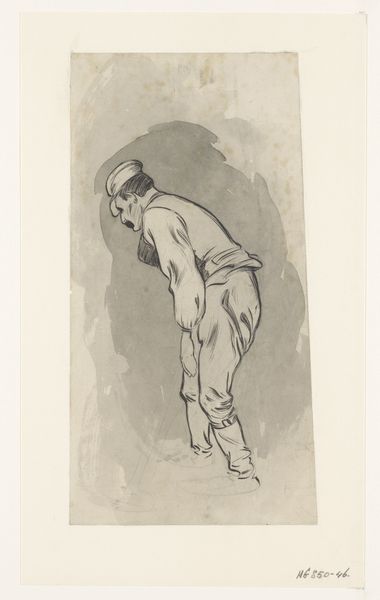
drawing, pencil
#
portrait
#
drawing
#
pencil sketch
#
pencil
#
portrait drawing
#
academic-art
#
realism
Dimensions: height 341 mm, width 159 mm
Copyright: Rijks Museum: Open Domain
Editor: Standing before us is Jan de Waardt's "Mijnwerker," created in 1898 using pencil. The stark lines and the subject's downcast gaze give off a feeling of weariness and resignation. What strikes you most when you look at this drawing? Curator: The image of the "Mijnwerker" or miner encapsulates a moment in Dutch history when industrial labor and its human cost were becoming increasingly visible. It’s crucial to consider the socio-political context of 1898. We see the rise of labor movements and socialist ideologies questioning the status quo. The Rijksmuseum displaying this pencil drawing elevates not only the artwork, but, perhaps, the status of the working class subject depicted within. Do you see it as a romanticized or critical portrayal? Editor: I hadn’t considered the rise of the Labor movement. I’m curious, because he isn’t idealized; his stance seems defeated. His clothes look rather ill-fitting and baggy as well. It feels critical to me. Curator: I agree. De Waardt uses realism to ground the viewer in the tangible reality of the miner's existence. He invites the audience to contemplate the conditions that shaped this man's life and consider the politics of labor that impact identity. And consider this: Who are the people omitted from traditional portraiture, and how does the act of including them alter the narrative around art’s purpose and audience? Editor: That makes so much sense. So, it's not just about seeing the miner as an individual, but also as a symbol of a larger socio-economic narrative. It certainly reframes how I initially viewed the drawing! Curator: Precisely. By examining the social context, we unveil layers of meaning and significance, allowing us to understand how this image resonated and continues to resonate with audiences across time. Editor: I see this drawing in a completely different light now, appreciating the layers of social commentary embedded within a seemingly simple portrait. Thanks for the insights.
Comments
No comments
Be the first to comment and join the conversation on the ultimate creative platform.
